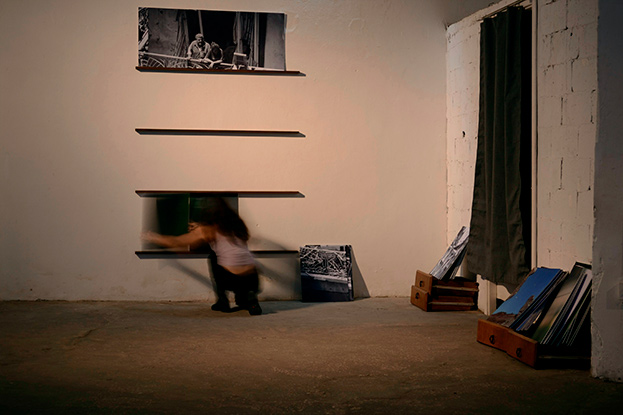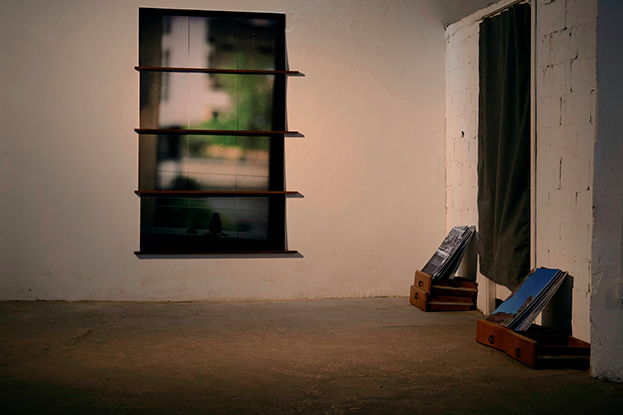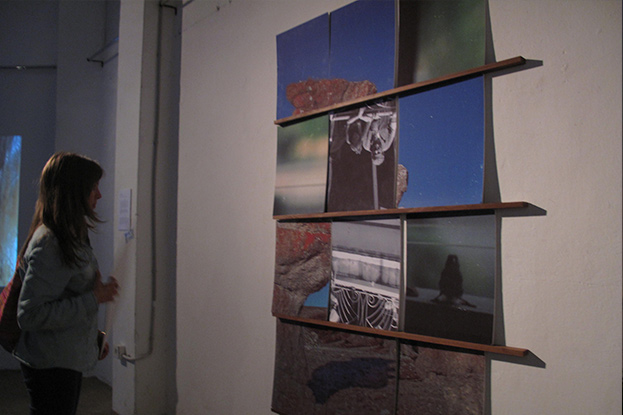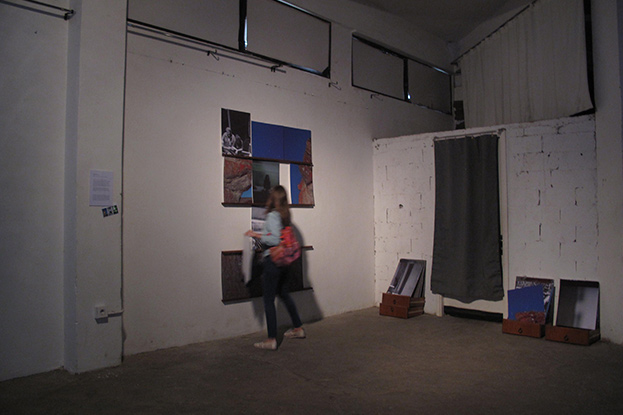
30.04. - 10.05.2015
Open Mon-Sun, 2-9pm
Sabine El Chamaa
Fårö - Beirut: Rememory in 3’s; 2015
large-scale photography installation (B&W and color photography)







7 - 7
<
>
Past projects


When I was asked to participate in ‘Vertical Collisions’ with something personal (rather than academic) around the topic of drones, I could only recall the anxiety of hearing a drone in July 2006. That sensation is not representable. But his request made me realize that there was, for me, a ‘before’ knowing what a drone sounded like and an ‘after’ that preceded the research I did around drones.
I searched through the piles of negatives for the photographs I took in June 2006 prior to learning what a drone means, sounds like, or how it operates from a distance. I found scratched negatives of Rauks (Stone Monolith from the Ice Age) that I photographed on the island of Fårö. My time in Fårö was dedicated to watching Ingmar Bergman’s classics during the Bergman week (a yearly festival dedicated to Bergman’s cinematic oeuvre), to exploring the island where they were filmed, and attending the talks Bergman gave that year. A thick texture of silence had imprinted itself in my auditory memory of the island of Fårö, and a sensation of having travelled to a place where shades of light and silence had a mystery and a depth that was unhampered by machines and by people. Less than a month following my return from Fårö to Beirut, the 2006 war on Lebanon began. In my photographic negatives of the summer of 2006, Fårö’s Rauks and Southern Beirut’s bombed out buildings were one roll apart while their soundscapes were on opposite scales in my memory.
I was surprised to learn that many of the artists participating in ‘Vertical Collisions’ were not aware of the fact that drones had been employed in the 2006 war on Lebanon. Elie Mohanna who crocheted the giant fragile 4.5 meters long ‘new body’ for the collective installation “Spectral Configuration” told me that he first heard of drones through the research he made for the installation, and he was equally surprised when I told him that drones were deployed in Lebanon in 2006. For Elie who resides outside of Beirut, the 2006 war appeared to be taking place in another country, through the live television news screen and the faint sounds of air raids in the distance muffled the details of what was taking place at a mere 2 hour car ride.
I recall walking the streets of Beirut in July 2006 and upon first hearing the buzzing of a drone, pointing my camera at it. I was warned by on-lookers that my video camera would appear as a weapon to the distant operator who could fire at me. It terrified me that an Israeli soldier sitting in an office in Tel Aviv could telecommand a buzzing/killing/flying/filming machine while I was not even allowed to look up and observe, through my own camera lens, the devolution of humanity in the age of technological robotic warfare.
The three photographs I picked for the installation were taken between June and August 2006 in Fårö and in Beirut and they represent my geographical journey between a ‘before’ and an ‘after’ knowing what a drone means. The space is a détournement of the museum imperative: ‘do not touch’ / ‘do not tamper with art’ and a critique of the notion of a photograph as an evidence/witness of war. It is an invitation to touch, to play, to destroy meanings, to fragment images, and to find that which eludes both artistic elitism and media’s voraciousness for shocking representations of contemporary warfare.
Sabine El Chamaa is a Lebanese filmmaker. She obtained an MFA in film from the University of Southern California (Los Angeles) in 1996 and worked as a film editor in the United States and in Europe before shifting her focus onto writing and directing her own projects. Amongst her films, Promenade received a Berlin Today Award grant and premiered at the Berlin Film Festival in 2009. Un Mardi, won first prizes in Dubai film festival (2010) and at the Festival International de Namur 2011 (FIFF). Questions around the representations of war in media and in film prompted her to pursue a practice led doctorate at Goldsmiths University, London. She received a PH.D in July 2014 for a thesis entitled ‘Picturing Live War: a research practice in an installation and a text’.
Special thanks to
